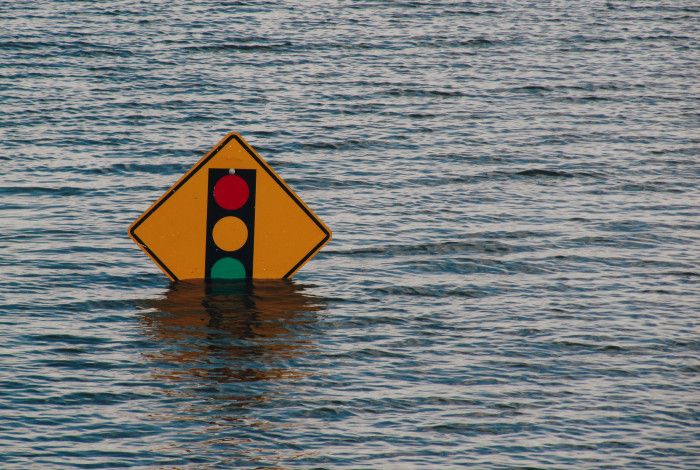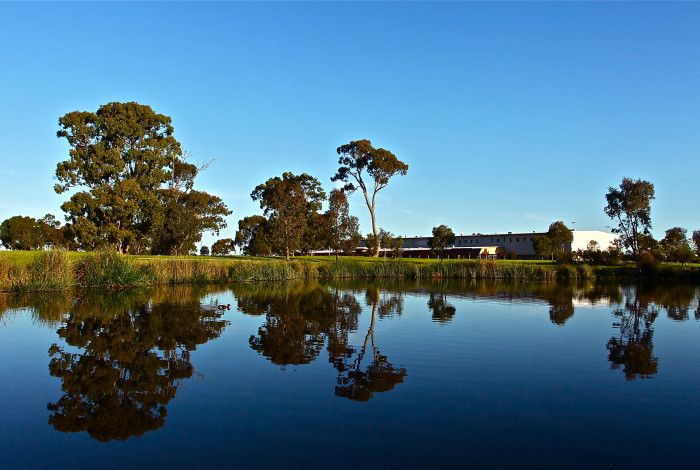All properties are required to have a stormwater drainage system that effectively collects and discharges the stormwater runoff from that property into a Council drain. The Council drainage network is comprised of various types of drains including underground pipes, open drains and culverts and the street kerb and channel.
The stormwater drainage system in Greater Dandenong is managed between Melbourne Water and Council. Melbourne Water is responsible for the provision and maintenance of its main drains and Council manages the remaining public drainage system within the municipality. Council's drainage network includes pits, open pipes, open drains and water sensitive urban design assets.
Property owners are responsible for stormwater drains on their property and any section of their private drain outside the property that connects to the legal point of discharge.
Preventing Stormwater Pollution
Preventing rubbish, grease, oil and other contaminants form entering the stormwater drainage system is the most effective way to reduce stormwater pollution.
Council’s responsibilities
Under the objectives of the Local Government Act 1989, Council has a duty of care to provide equitable and appropriate services and facilities for the community and to ensure that those services are managed efficiently and effectively.
Council therefore has a management system - including routine drain inspection, maintenance and cleaning - in place to ensure that the Council stormwater drains are operating efficiently.
However, during heavy rainfall it is common for drains to become blocked due to debris and leaves being washed into the drainage pits and pipes.
You can help prevent this by minimising the amount of debris, leaves and other garden materials on or outside your property that can be washed down the drains during intense rainfall.
Your responsibilities
Under the Water Act 1989 (Section 16), residents and property owners:
- are liable for flow of water from their land
- have a duty of care not to interfere with the flow of water
- must not participate in negligent conduct that will interfere with the flow of water onto any land
While each property may only have a minor influence on the performance of the drainage network, the cumulative effects within each catchment may become significant. Residents connected to the system should understand that the way they manage their property and assets may have a detrimental impact on the public drainage system (including easement pipes) and consequently, increase flood risk within the municipality.
Here are a few examples of behaviours that may have a detrimental impact on the performance of the system:
- Poor maintenance of private drains may result in premature blockage, reduce pipe capacity and/or prevent stormwater runoff entering the system. This may result in localised flooding and/or increased overland flows.
- Increasing the proportion of surfaces within a property (such as driveways and paths) will result in increased overland flows onto adjacent properties and/or public roads, as the existing private drain may no longer have the capacity to fulfill its flows.
- The erection of a physical barrier, such as a fence, across an overland flow path may divert stormwater runoff from its flow path and possibly put properties at risk.
- Easements in private backyards are generally located to minimise impact on surrounding buildings. Sheds, paths, driveway edging and other landscaping are common improvements that are sometimes placed over easements.
- The planting of trees on your property that develop large invasive root systems may eventually lead to burst or blocked pipes. Tree root filaments grow towards sources of water and nutrients. If a pipe is cracked or leaking, they will enter the pipe and grow, possibly filling the available space and blocking water flow.
All stakeholders, including residents and ratepayers need to be involved in stormwater quality and quantity management (including flood risk) plans. It is important that users of the public drainage system are aware that their behaviour may influence stormwater performance.
Council can provide information regarding controlled and prohibitive activities that may be undertaken within the area of an easement.



